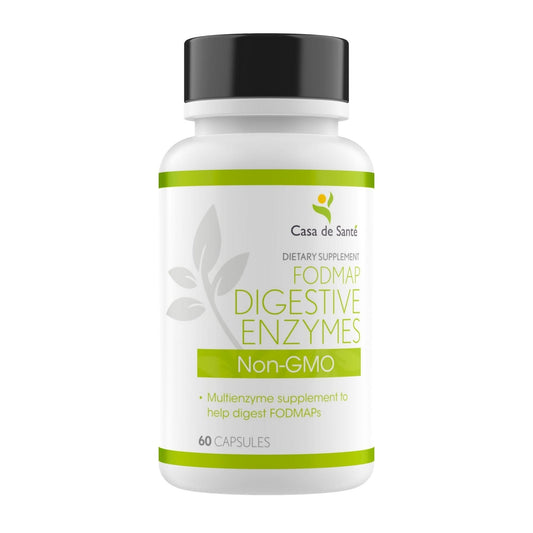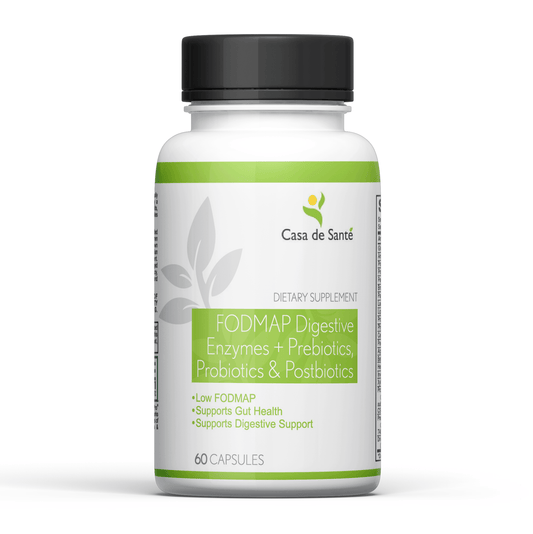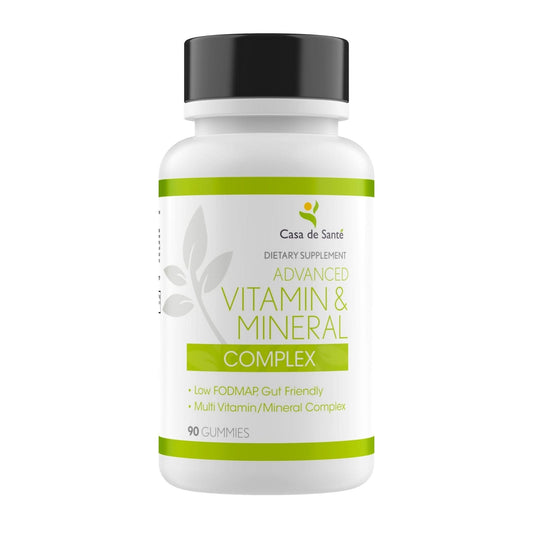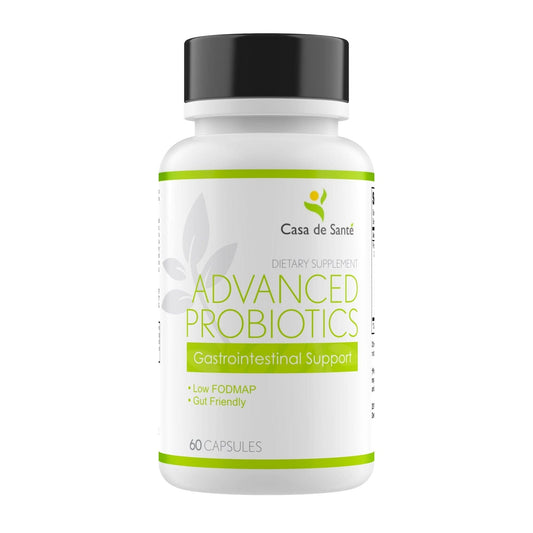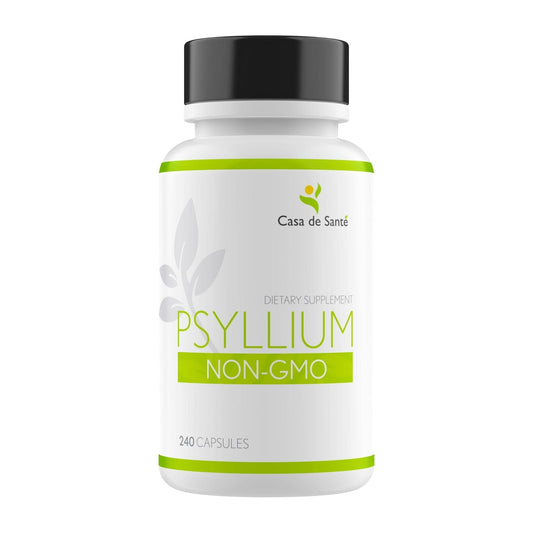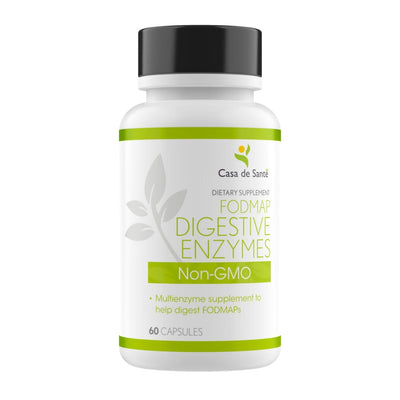Understanding the FODMAP Diet: What Is It and How Can It Benefit You?
Ever heard about the FODMAP diet and wondered what it is? It's a way of eating that some folks swear by to help with stomach issues. If you've been dealing with digestive problems, you might want to give this a look. The FODMAP diet is all about cutting back on certain carbs that can mess with your gut. Let's dive into what this diet is all about and see if it could be the answer to your tummy troubles.
Key Takeaways
- The FODMAP diet focuses on reducing certain carbs to help with digestion.
- It involves an elimination phase and a reintroduction phase to identify triggers.
- People with IBS or similar issues might find relief with this diet.
- It's not a long-term diet but a tool to figure out what foods cause issues.
- Consulting a healthcare professional before starting is a good idea.
What Is the FODMAP Diet?
Understanding FODMAPs
FODMAPs are specific types of carbohydrates that can be tough for some folks to digest. They stand for Fermentable Oligosaccharides, Disaccharides, Monosaccharides, and Polyols. These are found in a variety of foods, from fruits and veggies to grains and dairy. For some people, eating high FODMAP foods can lead to unpleasant digestive issues like bloating, gas, and stomach cramps. Imagine eating a delicious apple and then feeling like a balloon - not fun!
Origins of the FODMAP Diet
The FODMAP diet was created by researchers at Monash University in Australia. They were looking for ways to help people with digestive problems, especially those with Irritable Bowel Syndrome (IBS). The idea was to figure out which foods were causing trouble and eliminate them temporarily to see if symptoms improved. It's not meant to be a forever thing, but more of a tool to help people understand their bodies better.
Key Components of the Diet
The FODMAP diet is broken down into three main phases:
- Elimination Phase: You start by cutting out all high FODMAP foods for a few weeks. This helps to calm your digestive system.
- Reintroduction Phase: Slowly, you bring back foods one at a time to see which ones cause issues.
- Personalization Phase: Once you know your triggers, you can adjust your diet to avoid them while still enjoying a variety of foods.
The goal here isn't to restrict your diet forever but to find a balance that keeps your tummy happy. It takes some trial and error, but many find it's worth the effort to feel better.
How the FODMAP Diet Works
The Elimination Phase
The FODMAP diet kicks off with the elimination phase, which is like a detective mission for your gut. You temporarily cut out all high-FODMAP foods. This might seem like a lot, but it’s just for a short while, usually around 2 to 6 weeks. The idea is to give your digestive system a break from these tricky carbs. During this time, you focus on eating low-FODMAP foods, which are easier on the stomach. This phase is crucial because it helps reduce symptoms like bloating and gas.
The Reintroduction Phase
Once your symptoms have calmed down, it’s time to start the reintroduction phase. Here, you slowly bring back high-FODMAP foods, but one at a time. This isn’t about rushing; it’s about seeing how your body reacts. Each food is tested over a few days. If something causes trouble, you’ll know it’s a trigger. This phase can take a few weeks, but it’s super important for figuring out what your system can handle.
Maintaining a Balanced Diet
After you’ve pinpointed the foods that upset your stomach, you move into the maintenance phase. This is where you balance your diet around what you’ve learned. You’ll avoid or limit the foods that cause issues, but enjoy everything else without worry. It’s about finding a happy medium where you can eat comfortably without stress. Keeping a food diary can help you stay on track and adjust as needed.
The FODMAP diet isn’t just about cutting things out; it’s about understanding your body and what works best for you. It’s a journey of discovery that can lead to a more comfortable life.
Benefits of the FODMAP Diet
Improving Digestive Health
For many folks grappling with digestive issues, the FODMAP diet can be a game-changer. By reducing foods high in fermentable carbs, it eases symptoms like bloating, gas, and stomach pain. Many find relief from chronic discomfort, making daily life a bit more bearable. The diet's tailored approach, often guided by a nutrition assessment, helps pinpoint specific triggers, leading to better gut health.
Identifying Food Triggers
A big plus of the FODMAP diet is its ability to help you figure out what foods are causing trouble. The reintroduction phase is like a detective mission where you slowly add back foods and see which ones mess with your stomach. This way, you get a clear picture of what to avoid, making meal planning less of a headache.
Enhancing Quality of Life
Living with constant digestive issues can be exhausting, both physically and mentally. The FODMAP diet aims to reduce these symptoms, which can lead to more energy and less stress. Imagine not having to worry about sudden stomachaches or rushing to the bathroom—life becomes a lot more enjoyable. It's not just about physical health; it's about feeling better overall.
The FODMAP diet is more than a meal plan—it's a pathway to understanding your body better and living a more comfortable life.
Foods to Eat and Avoid on the FODMAP Diet
Low FODMAP Foods
When you’re on a low FODMAP diet, you don’t have to feel like you’re missing out. There are plenty of tasty options to keep your meals exciting:
- Vegetables: Carrots, zucchini, eggplant, and spinach are your friends here. You can also enjoy bell peppers and cucumbers without worry.
- Fruits: Feel free to munch on strawberries, oranges, and kiwi. Grapes and pineapple are also safe bets.
- Proteins: Chicken, beef, and fish like salmon and tuna are naturally low in FODMAPs. Eggs and tofu are great choices too.
- Grains: Rice, quinoa, and oats fit perfectly into this diet. You can also snack on popcorn or tortilla chips.
- Nuts and Seeds: Grab a handful of peanuts, macadamia nuts, or walnuts.
High FODMAP Foods
Some foods are best avoided if you’re trying to keep your FODMAP intake low:
- Vegetables: Steer clear of onions, garlic, and asparagus. Mushrooms and cauliflower are also high in FODMAPs.
- Fruits: Apples, pears, and watermelon are best left off your shopping list.
- Dairy: Regular milk, yogurt, and soft cheeses can cause issues. Opt for lactose-free versions instead.
- Grains: Wheat-based products like bread, pasta, and cereals are high in FODMAPs.
- Sweeteners: Be cautious with honey and high-fructose corn syrup.
Tips for Meal Planning
Planning meals on a low FODMAP diet can be a bit tricky, but with some practice, it becomes second nature:
- Start Simple: Use fresh, whole foods and avoid anything processed.
- Batch Cooking: Prepare large amounts of low FODMAP meals and freeze portions for later.
- Experiment: Try different herbs and spices to add flavor without relying on garlic or onion.
Eating low FODMAP doesn’t mean you have to compromise on taste. With a little creativity, you can enjoy delicious meals while managing your symptoms effectively.
Who Can Benefit from the FODMAP Diet?
If you've ever dealt with Irritable Bowel Syndrome (IBS), you know it's no walk in the park. The FODMAP diet can be a game-changer for people grappling with IBS. By cutting out specific carbs that are tough on the gut, many folks find relief from those annoying symptoms like bloating and stomach pain. The diet helps pinpoint which foods are causing the trouble, so you can avoid them and feel better.
Addressing SIBO
Small Intestinal Bacterial Overgrowth (SIBO) is another condition where the FODMAP diet shines. SIBO happens when bacteria that usually grow in other parts of the gut start hanging out in the small intestine. This can lead to discomfort and digestive issues. By following the FODMAP diet, you can help reduce the bacteria's food supply, which might ease symptoms.
Consulting with Healthcare Professionals
Before jumping into the FODMAP diet, it's smart to chat with a healthcare pro. They can guide you on how to start and stick with it safely. Since the diet involves cutting out a lot of foods, getting advice ensures you don't miss out on important nutrients. Plus, they can help tailor the diet to your specific needs, making the whole process smoother.
Challenges and Considerations
Potential Nutritional Deficiencies
Following a FODMAP diet can sometimes lead to nutrient gaps. When you cut out certain foods, you might miss out on key vitamins and minerals. For instance, avoiding wheat can reduce your fiber intake, which is essential for digestion. It's crucial to find alternative sources of nutrients to keep your diet balanced. Keeping track of your nutritional intake can help prevent deficiencies.
Adapting to Dietary Changes
Switching to a FODMAP diet is not always a walk in the park. It means changing your usual eating habits, which can be tough. Here are some tips to make the transition smoother:
- Start with a meal plan: Planning your meals can help you stick to the diet.
- Explore new recipes: Trying out new dishes can make the diet feel less restrictive.
- Gradual changes: Slowly introduce low FODMAP foods to get accustomed to the new diet.
Seeking Professional Guidance
Embarking on a FODMAP diet without guidance can be overwhelming. Consulting a dietitian or nutritionist can provide support and ensure you're meeting your nutritional needs. They can help tailor the diet to suit your lifestyle and health goals.
It's important to remember that a FODMAP diet is not one-size-fits-all. Professional advice can make the journey easier and more effective.
When dealing with health issues, it's important to think about the challenges you might face. You may encounter obstacles like finding the right products or understanding dietary needs. Don't let these challenges hold you back! Visit our website for helpful resources and support to guide you on your journey to better health.
Conclusion
So, there you have it. The FODMAP diet isn't just another fad. It's a real game-changer for folks dealing with tummy troubles. By cutting out certain carbs, you might find relief from those annoying symptoms like bloating and gas. But remember, it's not a one-size-fits-all solution. What works for one person might not work for another. It's all about finding what suits your body best. And hey, don't go it alone. Chat with a dietitian or your doctor to make sure you're on the right track. Give it a shot, and who knows? You might just find the comfort you've been looking for.
Frequently Asked Questions
What exactly is the FODMAP diet?
The FODMAP diet is a way of eating that helps people with tummy troubles. It involves cutting out certain carbs to see if they are causing issues like bloating or gas.
Who should try the FODMAP diet?
People with digestive problems like IBS or SIBO might find relief with the FODMAP diet. It's best to talk to a doctor first.
How long do I need to follow the FODMAP diet?
The FODMAP diet is usually done in phases. The first phase lasts about 2-6 weeks, where you avoid certain foods, and then you slowly add them back to see what bothers you.
What foods can I eat on the FODMAP diet?
You can eat foods like eggs, meat, and certain fruits and veggies that are low in FODMAPs. It's important to know which foods are safe.
Can the FODMAP diet help with weight loss?
The FODMAP diet is not meant for losing weight. It's for helping people figure out which foods upset their stomach.
Is it hard to follow the FODMAP diet?
It can be a bit tricky at first, but with some planning and maybe help from a dietitian, it gets easier.



